“It’s everyone’s first question, and no one likes the answer, But while we’re on the subject of patents, here’s a way of thinking about them that can make a huge difference for your business.
Patents create a business asset—and that’s something investors look for.
That doesn’t mean you should stop thinking about patents and coming up with a patentable idea. Patents are a great way to create value for a company. You can sell them, license them, use them to fend off competition. They create a business asset—and that’s something investors look for.
So yes, you should be looking for opportunities to reinforce your company with patents. Your recipe was just one possibility. There may be others—and better.
But first you need to know some basics of patent law.
The recipe, the can, the bottom of the can . . .
Patents, specifically what lawyers call “utility patents,” are primarily approved for processes, devices and designs. A utility patent provides a monopoly for a set period of time—20 years for new patents. “A patent gives the patent holder the exclusive right to make, use, and sell the invention,” says James M. Singer, a patent attorney with the firm of Fox Rothschild in Pittsburgh. With patent in hand, you can sue an infringer. If you win, the court can order the infringer to stop copying your invention or make him pay you.
As a result, big companies tend to patent every innovation they can. When Procter & Gamble invented Pringles, it obtained separate patents for the recipe, the machine that made the chips, the insert for the bottom of the can that matched the curve of the saddle-shaped chip, and the packaging that kept cans from crushing each other during shipping, among others. If you can keep your invention permanently under wraps while you sell your product, you may want to forego patents and rely on trade secret protection.
Inventions have to be new (we’ll get to that in a minute) but it’s possible to patent a process that builds on an existing one, though you can only claim ownership in the addition. For example, in 1902, a New York botanist named Alexander P. Anderson patented a process to puff grains of rice by heating them in a sealed chamber and then explosively releasing them through a set of tubes. Anderson sold the patent to Quaker Oats which used it to launch its “shot from guns” Puffed Rice and Puffed Wheat product lines.
Got the big idea? Here’s your application toolkit
The U.S. Patent and Trademark Office does what it can to hold your hand through the patent application process. The first thing to know, however, is you need to apply…yesterday.
“If you’re thinking of patenting something, you really should be thinking of it as soon as you create the idea,” says Tony Knight, USPTO’s acting associate commissioner for innovation and development. “That process generally to get the first decision from us takes about 17 months. And the overall process here, on average, takes about 26, 27 months.”
Here’s a roadmap:
- Visit the USPTO’s inventors and entrepreneurs resources page (it’s very start-up-friendly).
- Figure out what kind of patent you need.
- Prepare to pay fees. There will be several: application (do this online or pay extra), search and examination. You can access the fee schedule here.
- File your application.
- Connect with an examiner. You’ll be notified of application deficiencies by mail.
Knight points out a number of resources start-ups can take advantage of, including accelerated examination, the patent pro bono program (for free legal assistance), and the pro se assistance program for inventors filing applications without the help of a patent attorney.
Read More
But that wasn’t the end of the innovation. Over the years, dozens of follow-on patents have been filed for precooking the rice to make the final product crisper, for puffing brown rice, for turning puffed rice into cakes and crackers, for creating a microwaveable home-puffed rice cake, and so on. The original patent is long expired, but there seems to be no end to its progeny.

A hamburger plus a grilled cheese equals . .
If so many inventions are patent-worthy, why not recipes? To be eligible for patent protection, an invention has to meet two standards—and both are difficult for recipes to meet.
It has to be novel. Your grandma’s lasagna? It may never have been sold commercially, but it’s not new. The clock ticks fast on inventions: If you’ve been distributing or displaying an item in public for a while, you’ve probably blown your chance at a patent. “You can’t patent something that you have been selling or serving others for a number of years or that anybody else has been selling or serving to others for a number of years,” says Singer. Your famous parmesan pizza dough? That “famous” is a problem.
A combination of diligently protecting your secret and developing strong consumer loyalty can effectively maintain your place in the market.
It has to be non-obvious. To explain this concept, Singer points to the cheeseburger. It couldn’t be patented today, because a cheeseburger is clearly not novel. But, even if we lived in an alternative universe with (shudder) no cheeseburgers, the patent office might still reject an application covering the concept. “If the patent office did a search and they found that the hamburger existed and the grilled cheese sandwich existed, they may come back and say, well it’s obvious to put those two things together.”
The patent office tends to view recipes as mere lists or combinations, which are not eligible for patent protection, no matter how inventively the ingredients are combined. “Patenting a food recipe is nearly impossible and is a terrible waste of time for over 99 percent of entrepreneurs,” says Tammy Katz, founder and CEO of Katz Marketing Solutions, a brand marketing company. The patent office has a good article here on why that’s so.
And, as we said, there are exceptions. Recipes that solve a problem in a new way or adapt to new technology can be good candidates for patent protection. Think, refrigerated pre-made cookie dough, microwavable food, or even toaster cookies—though Pop-Tarts, among other well-known products, seem not to have been patented at all.
You ’ve got a secret
’ve got a secret
Why would a manufacturer not patent an invention? In reality, there’s a downside to patents. You have to disclose the details of your invention in the application, a public filing. When your patent expires, anybody is free to use it. That’s why many food producers—including the likes of Coca Cola, KFC, and Bush’s Baked Beans—make a point of not patenting some of their most valuable intellectual property. They protect it another way—by keeping it secret. And, clearly, a trade secret can protect the intellectual property for far longer than 20 years
“A design patent is actually a relatively low cost way to obtain some type of intellectual property coverage on a product because it doesn’t require an attorney to draft pages of technical description, it just requires a few drawings.”
If your invention, by its very nature, is going to be disclosed to the public as soon as your product goes on sale, then trade secret protection is not an option. But, if you can keep your invention permanently under wraps while you sell your product, you may want to forego patents and rely on trade secret protection.
Fair warning: trade secrets aren’t perfect either. “If you have, let’s say, the yummiest barbecue sauce,” says Katz, “large companies can easily look at a prototype and figure out what’s in it—as can most people—and do it themselves.” But, as Coke has shown, reverse engineering is not always possible, and a combination of diligently protecting your secret and developing strong consumer loyalty can effectively maintain your place in the market.
If you do want aspects of your business to remain trade secrets, limit access to the information as much as possible—strictly need-to-know—and require that everyone in or outside the company who must learn the secrets sign non-disclosure agreements.
Utility patents and copyright are the most familiar ways to protect intellectual property, but they aren’t the only ones. Here are three other tools you need to be familiar with.
A design patent covers the ornamental design of a product, not the structural or utilitarian aspects of the thing. Design patents provide the owner with a 15-year monopoly. “A design patent is actually a relatively low cost way to obtain some type of intellectual property coverage on a product because it doesn’t require an attorney to draft pages of technical description, it just requires a few drawings,” says Singer. The James Smucker Company, for example, has a design patent for the appearance of its Uncrustables peanut butter and jelly sandwiches. Makers of chips and crackers frequently use design patents to protect the products’ shapes.
Utility patents, design patents, trade secrets, trade dress, and trademarks are all tools at your disposal to protect your company’s intelectual property and goodwill.
Trade Dress. If your product has been out in the market for some time, you may also be able to protect its appearance under trademark law. “If consumers associate some aspect of your product’s appearance or packaging exclusively with your company, you may already have built up what are referred to as ‘trade dress rights,’” says Leo Kittay, a trademark attorney with Fross Zelnick Lehrman & Zissu (and a member of The New Food Economy advisory board). These rights can help you prevent others from selling a lookalike product hoping to capitalize on your brand’s goodwill.
Trademarks. As you work to make your products as high quality and desirable as possible, make sure you are protecting and enforcing your company’s trademark rights in the names, slogans and logos you use to brand your company. This means using your trademark consistently, obtaining strategic trademark registrations and policing the marketplace to ensure that no newcomers are using your trademarks, or anything too similar to your trademarks, in a way that might confuse consumers. This can be even more complex and time-intensive than registering and protecting a patent—but for many food companies it is a more powerful form of protection.
 The right protection at the right time
The right protection at the right time
Utility patents, design patents, trade secrets, trade dress, and trademarks are all tools at your disposal to protect your company’s intelectual property and goodwill. The savviest entrepreneurs rely on a combination of these protections. “The trick,” says Kittay, “is to develop a strategy that aligns with your strategy for growth, so that get the right protection at the right time without blowing your whole budget on intellectual property protection before you have even proven your business model.”
The place to really invest your effort, says Tammy Katz, is in building your brand. “The power of the consumer’s demand and love for your product and your brand—that’s your best protection.”

 awareness and brand esteem, well beyond their peers, which yields very high levels of brand equity, from which a setback can borrow. Brand equity is like a bank account: continued positive experiences build brand equity; issues will erode. Consumers have a very strong personal affinity, love and respect for the brand; it’s well beyond a fast-food choice they visit. In fact,
awareness and brand esteem, well beyond their peers, which yields very high levels of brand equity, from which a setback can borrow. Brand equity is like a bank account: continued positive experiences build brand equity; issues will erode. Consumers have a very strong personal affinity, love and respect for the brand; it’s well beyond a fast-food choice they visit. In fact, 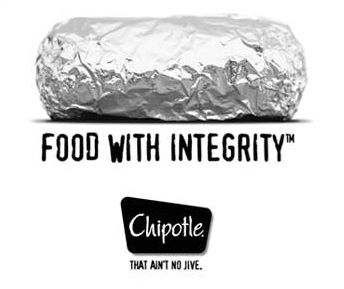
 and sophistication will also accelerate the pace of same-store-sales rebound. We expect a recovery in 3-4 quarters, propelled by an even stronger in-store experience, product quality, favorable public relations, and consumer word-of-mouth.
and sophistication will also accelerate the pace of same-store-sales rebound. We expect a recovery in 3-4 quarters, propelled by an even stronger in-store experience, product quality, favorable public relations, and consumer word-of-mouth.

 ’ve got a secret
’ve got a secret
 The right protection at the right time
The right protection at the right time





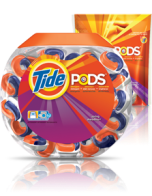
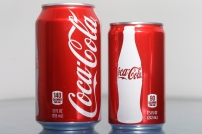
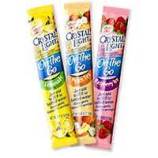

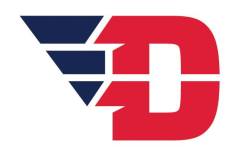
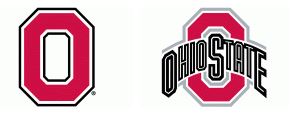
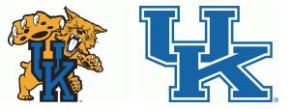


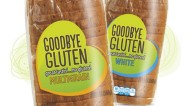
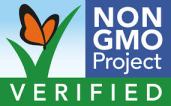

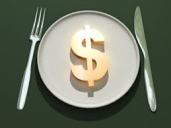
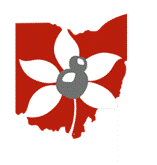 Hill Cheese (Heini’s)
Hill Cheese (Heini’s)